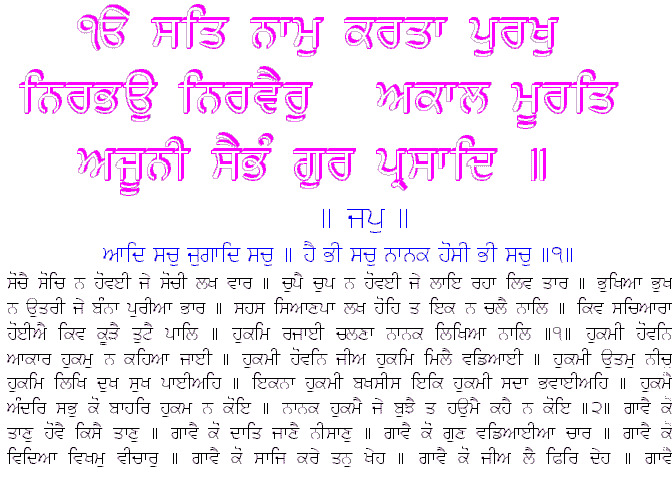

When the Guru Granth Sahib is not being read or recited, it is ceremonially closed, and a prayer is said before it is put into “sukhasan,” a state of peaceful repose. It is often housed in a special room within a gurdwara, the Sikh place of worship, where it is placed on a canopied bed. The scripture is highly respected, and Sikhs treat it with great reverence. Sikhs believe that the teachings and wisdom contained within the Guru Granth Sahib provide guidance for all aspects of life. Before his death, Guru Gobind Singh declared that there would be no more human Gurus and that the Guru Granth Sahib would serve as the eternal Guru for all time. The Guru Granth Sahib is not just a collection of religious hymns but is considered the living Guru by Sikhs. It is a combination of devanagari and takri scripts. The text is written in the Gurmukhi script, which is the script traditionally used for writing Punjabi. The Guru Granth Sahib consists of 1,430 pages known as “angs” and contains 5,894 poetic compositions called “shabads.” These shabads are written in various languages, including Punjabi, Lahnda, regional Prakrits, Apabhramsa, Sanskrit, Hindi languages (Braj Bhasha, Bangru, Awadhi, Old Hindi), Bhojpuri, Sindhi, Bengali, Persian, and Arabic.

This second rendition became known as the Guru Granth Sahib and is sometimes referred to as the Adi Granth as well. Later, Guru Gobind Singh, the tenth Guru, added the hymns of Guru Tegh Bahadur to the Adi Granth, affirming it as his successor. He also included verses from enlightened Muslim and Hindu Bhagats and Bhatt Minstrels. Guru Arjan compiled hymns from previous Gurus, including Guru Nanak, Guru Angad, Guru Amar Das, and Guru Ram Das. The Adi Granth was installed inside the Golden Temple in Amritsar, Punjab, on September 1, 1604. The compilation of the Guru Granth Sahib began with the Adi Granth, which was completed in 1604 by Guru Arjan, the fifth Guru of Sikhism. The Guru Granth Sahib holds great reverence and plays a pivotal role in the lives of Sikhs. It is regarded by Sikhs as the final and eternal Guru, following the lineage of the ten human Gurus of the religion.


The Guru Granth Sahib, also known as Sri Guru Granth Sahib Ji, is the central holy religious scripture of Sikhism.


 0 kommentar(er)
0 kommentar(er)
